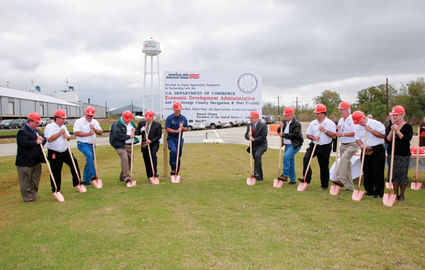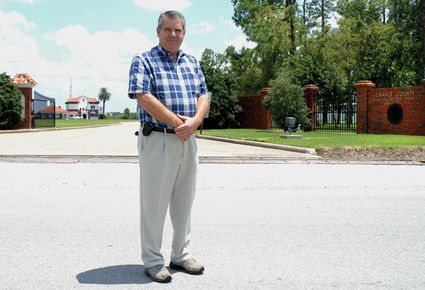Orange port notes record year
Last updated 1/13/2010 at Noon
[Last in a series about the history of the Port of Orange] As the Port of Orange entered the second decade of the 21st century, Director Gene Bouillion described 2009 as a record year, adding, “We’re set up to have another good year.”
In 1953 the port, then known as “the city docks,” was designated a special district to operate countywide and transferred from the city of Orange. At that time, the board of commissioners was created along with by-laws.
“We recently acquired the U.S. Naval Reserve Center on Pier Road and are in the process of developing that land,” Bouillion said.
“We’ve leased the administration building to Signal International for their corporate offices. We are currently working with a customer to stage a barge fleeting area down on that property, and we’re still facilitating the navy of Mexico for their visits here every 60 days or so.
“We have several industries now that are unloading product by barge, making different blasting materials and bagging and trucking it and selling it. So that property has really come into its own. One would go down Pier Road and there was nothing but drugs because there was nothing out there. It was vacant. But now there’s so much traffic out there it’s really come a long way.”
Port property is also home to the Lamar State College-Orange welding school, which LSC-O officials are considering expanding, Bouillion said.
In addition to several clients that perform dry-dock barge and offshore vessel repairs, and continues to operate a considerable lay-berthing business.
“That’s our ‘cash cow,’” Bouillion said. “That’s where all the revenues come from to allow us to do the infrastructure improvements we’ve been doing, because it’s been real good for us and it’s also a very good hedge against bad times.”
Some of those improvements include:
In 2009, the port unveiled its new security center (named for longtime board member and president Lester Winfree), and simultaneously broke ground for the Containerized Cargo Yard Project which when complete will help improve port infrastructure.
Barges can be loaded to heavier standards and save clients money compared to the current system of trucking.
The project is funded by a grant from the Economic Development Administration (EDA).
Barge transports will also mean less traffic on Interstate 10.
Bouillion said the cargo project would take about 18 months to finish, and only then would officials know how many jobs can be added.
He said local plants have shown much interest in the project.
The port generates most of its own revenue, Bouillion said.
Roughly, that’s about $4 million with only some $325,000 from a tax base, he said.
The security center was funded through a grant from the Department of Homeland Security to have a permanent centralized location of main security area, to provide controlled access to the port and upgrade the existing facilities; based on standards of the TWIC (Transworker Identification Credential) System. New TWIC requirements include direct function of volume, diversity of products handled and markets developed.
Also, in 2008, port officials and area leaders took part in a ground breaking ceremony signifying the start of a new intermodal rail project to help rehabilitate the freight railroad line into the port. U.S. Rep. Kevin Brady had secured $500,000 in federal funding for the project. The complete $2.4 million project was designed to rehabilitate the railway which runs from the port to the Union Pacific Line in downtown Orange. The existing railroad track floods and is dangerous, as demonstrated by Hurricane Rita in 2005.
The port had its beginnings with sawmill operators who saw the Sabine River as an opportunity to improve transportation and further business interests in Southeast Texas. According to research by the late Nina Harden, in 1888, the Lutcher and Moore Lumber Co.’s schooner Comet set out from Sabine Pass Harbor carrying cross-ties for the Mexican Railway at Tampico. By 1893, a depth of 17 feet had been attained through the pass and after the arrival of the schooner Augustus H. Welt, which could carry a large cargo of lumber and timber to foreign points; Orangeites and others celebrated with a jubilee.
The Orange port made her entrance in 1916 with completion of a 25-foot channel to tide water; called by a writer at the time as “Nature’s Outlet to the Sea.” Earlier in 1915, pacts were made with both local unions of the International Longshoremen’s Association.
The Gulfport, Miss., basis and wage scale were adopted for the Port of Orange.
This provided for a nine-hour working day with a scale of 30-35 cents per hour for laborers and 50 cents for foremen.
The use of the water by visiting vessels could be used in the washing of boilers and provide savings to appeal to owners of steam vessels; and Orange voters passed a bond issue of $150,000 to finance the construction of a slip, wharves and railroad.
Historian J.M. Dullahan later noted that the Sabine “was the most important artery of commerce west of the Mississippi.”



















Reader Comments(0)